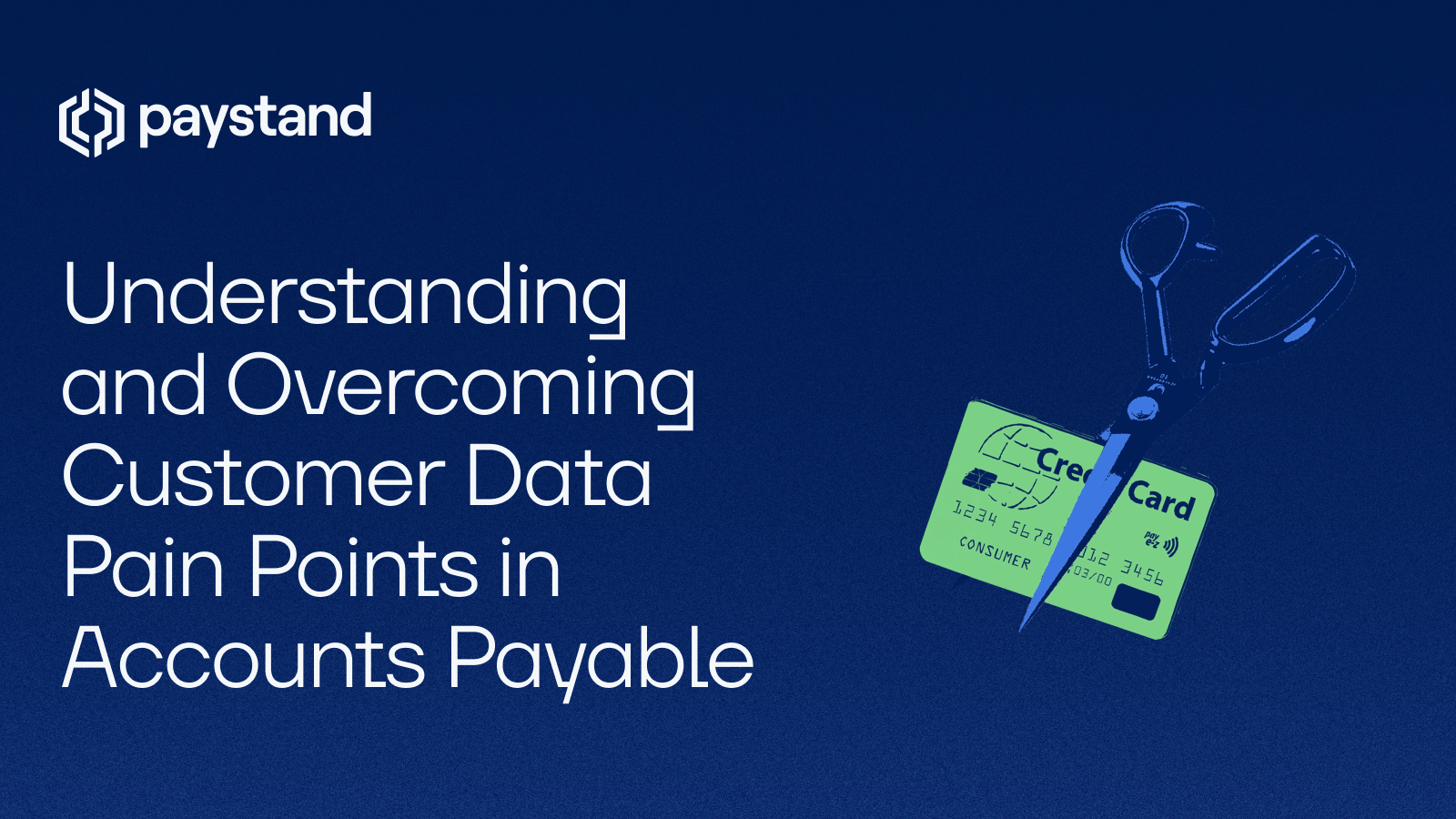Understanding & Overcoming Customer Pain Points in Accounts Payable

Table of Contents
- Manual Processing: The Hidden Cost of Slow Workflows
- Fraud Risks in Accounts Payable
- Inefficient Workflows Impact the Bottom Line
- What Are the Challenges of Accounts Payable?
- 6 Accounts Payable Pain Points
- The Cost of Accounts Payable Problems
- How to Solve Accounts Payable Challenges
Key Takeaways
- Manual processes slow down AP and introduce costly errors.
- Fraud risks grow without modern controls and visibility.
- Inefficient workflows damage vendor trust and reduce cash flow.
- Automation saves time, improves accuracy, and strengthens compliance.
Tools like OCR, virtual cards, and smart contracts can eliminate these pain points entirely.
In finance, accounts payable (AP) teams can’t afford to be slowed down by outdated processes, inaccurate data, or a lack of visibility. I’ve worked with dozens of finance departments navigating these challenges, and the patterns are clear: manual processing, fraud risks, and inefficient workflows drain resources and erode vendor relationships—often without leadership realizing how much it’s costing the bottom line.
Below, I’ll outline the most common accounts payable pain points, the measurable impact they have, and how AP automation software is helping leading finance teams eliminate them for good.
Manual Processing: The Hidden Cost of Slow Workflows
Manual invoice processing—whether through spreadsheets, PDFs, or paper invoices—remains one of the most time-consuming and error-prone tasks in the AP cycle.
In my experience, even well-trained finance teams working in a structured process face manual data entry errors that can delay payments, increase dispute rates, and impact cash flow. A 2024 Ardent Partners report found that nearly 25% of AP staff time is spent fixing these errors.
AP automation solutions using optical character recognition (OCR) can capture invoice data automatically, speeding approvals and reducing mistakes. Learn more in our guide on Invoice Management.
Fraud Risks in Accounts Payable
AP departments handle high volumes of sensitive financial information, making them a target for both internal and external fraud. In Deloitte’s 2023 Global Fraud Survey, 35% of organizations reported fraud incidents in procurement or payables.
Without spend management controls, it’s difficult to track who approved a payment or verify a vendor’s legitimacy. Modern AP platforms include audit trails, AI-based anomaly detection, and features like Virtual Expense Cards that help finance leaders mitigate fraud risk without slowing down operations.
Inefficient Workflows Impact the Bottom Line
When workflows aren’t centralized, AP teams often juggle multiple systems for data entry, approvals, and payments. This fragmented approach adds unnecessary delays and creates opportunities for vendor relationship friction.
Late payments can lead vendors to reduce credit terms or demand prepayment—tightening cash flow even further. Centralizing your workflows and adopting digital tools like Xero Invoice Processing can help ensure invoices are processed on time, every time.
What Are the Challenges of Accounts Payable?
From my consulting work with finance teams, the top challenges include:
- High volumes of invoices with limited AP staff
- Manual verification of invoice data
- Poor visibility across departments and entities
- Cash flow uncertainty due to delayed reporting
These aren’t just operational annoyances—they affect strategic planning and financial agility.
Six Accounts Payable Pain Points
- Manual data entry errors
- Time-consuming approval processes
- Duplicate or fraudulent invoices
- Poor visibility into liabilities
- Vendor disputes over payment status
- Difficulty reconciling with ERP systems
For practical strategies, see our full guide on How to Manage Accounts Payable Effectively.
The Cost of Accounts Payable Problems
AP issues translate directly into financial loss:
- Higher labor costs from repetitive tasks
- Late fees and lost early payment discounts
- Strained vendor relationships
- Missed opportunities to optimize cash flow
Over time, these costs can amount to hundreds of thousands in lost profit—something CFOs and controllers can’t afford to overlook.
How to Solve Accounts Payable Challenges
The most effective AP automation solutions integrate with your ERP, providing features like:
- OCR for invoice data capture
- Automated approval routing
- Real-time reporting dashboards
- Fraud prevention controls
Automation ensures invoices are processed faster, fraud risks are reduced, and cash flow becomes predictable. For forward-thinking teams, Smart Contracts are emerging as the next step toward fully transparent vendor agreements.
Ready to eliminate AP pain points and take control of company spend?







%20(1)%20(1).jpg?width=100&height=100&name=IMG_3752%20(1)%20(1)%20(1).jpg)